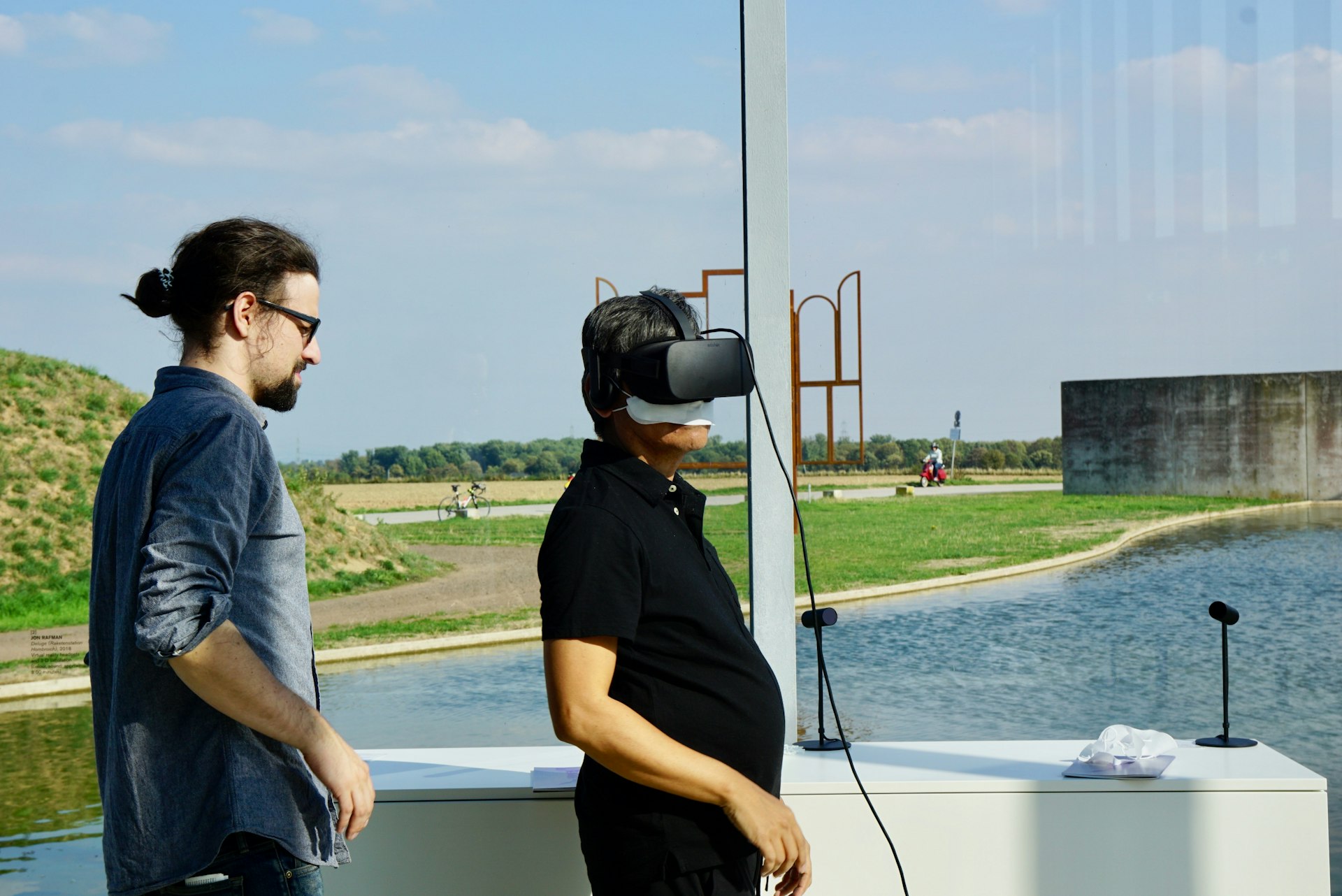In today's fast-paced world, photography is always changing, thanks to new technologies. As photographers, it's crucial to stay updated on these innovations to remain competitive in the industry. In this blog post, we will explore some of the key trends and technologies shaping photography in the digital age. We'll also discuss how photographers can navigate these changes to enhance their craft.
High-Quality Images
In the digital age, producing high-quality images is essential. With the latest camera technology, photographers can now create stunning images with greater detail and clarity. Modern cameras have higher resolutions, which means they can capture more details in each shot. Additionally, improvements in sensor technology allow cameras to perform better in low-light conditions, producing clear and vibrant images even in challenging environments.
Tips for High-Quality Photography:
- Invest in a Good Camera: Choose a camera that suits your needs, whether it's a DSLR, mirrorless camera, or even a high-end smartphone. Cameras with larger sensors and higher megapixel counts can capture more detail and handle various lighting conditions better.
- Use Proper Lighting: Good lighting can make a huge difference in the quality of your photos. Experiment with natural light, like the soft glow during golden hour, or use artificial lighting such as studio lights to achieve your desired effect. Reflectors can also help to manipulate light and remove harsh shadows.
- Learn Post-Processing: Editing software like Adobe Lightroom or Photoshop can enhance your photos, bringing out details and correcting any flaws. Post-processing allows you to adjust exposure, contrast, and color balance, as well as remove unwanted elements from your photos.

Mobile Photography
With the rise of smartphones, mobile photography has become increasingly popular. Smartphones today come equipped with powerful cameras that can rival some traditional cameras. This makes it easier for photographers to capture professional-quality images on the go and share them instantly on social media platforms.
Tips for Mobile Photography:
- Know Your Phone's Camera: Understand the features and settings of your smartphone camera. Experiment with different modes and settings to see what works best. For example, use portrait mode for blurred backgrounds or night mode for low-light conditions.
- Use Editing Apps: There are many mobile apps available that can help you edit and enhance your photos. Some popular ones include VSCO, Snapseed, and Adobe Lightroom Mobile. These apps offer various filters, adjustment tools, and effects to improve your images.
- Keep Your Lens Clean: A dirty lens can ruin a great shot. Make sure to clean your phone's camera lens regularly to avoid smudges and dirt. A microfiber cloth is perfect for this purpose.

Model: Kaden Jaeleah | Photographer: Toshia D
Drone Photography
Drones have revolutionized the way photographers capture aerial shots. With drones, photographers can access unique perspectives and angles that were previously impossible to achieve. This opens up a whole new world of creative possibilities, from stunning landscapes to dynamic cityscapes.
Tips for Drone Photography:
- Learn the Basics: Before flying a drone, make sure you understand the basics of drone operation and safety. This includes knowing how to control the drone, understanding local regulations, and practicing basic maneuvers.
- Plan Your Shots: Think about what you want to capture before taking off. Planning your shots can help you make the most of your drone's battery life and ensure you get the best angles. Use Google Earth or maps to scout locations and angles beforehand.
- Practice Makes Perfect: Flying a drone takes practice. Spend time getting comfortable with your drone and practicing different maneuvers to improve your skills. Start with simple flights and gradually move to more complex shots.

Virtual Reality (VR) Photography
Virtual reality technology has opened up new possibilities for photographers to create immersive experiences for viewers. By incorporating VR technology into their work, photographers can transport viewers to different locations and engage them in a whole new way.
Tips for VR Photography:
- Invest in VR Equipment: To create VR content, you'll need a 360-degree camera and VR software. Research the best options within your budget. Some popular 360-degree cameras include the GoPro MAX and the Insta360 ONE X2.
- Understand VR Techniques: Learn how to shoot and edit VR content. This includes understanding how to stitch 360-degree images together and how to create a seamless VR experience. Many VR cameras come with their own software for stitching images together.
- Experiment with Different Scenes: VR is all about creating an immersive experience. Experiment with different scenes and locations to see what works best in VR. Try to capture environments that tell a story or offer unique experiences.

Social Media and Online Presence
In the digital age, having a strong online presence is crucial for photographers. Social media platforms like Instagram, Facebook, and Pinterest are great for showcasing your work and reaching a broader audience. Additionally, having a professional website can serve as an online portfolio and help you attract potential clients.
Tips for Building Your Online Presence:
- Consistent Posting: Regularly update your social media accounts with new photos. Consistency helps you stay engaged with your audience and keep them interested in your work. Use scheduling tools like Buffer or Later to plan and organize your posts.
- Engage with Your Audience: Respond to comments, participate in photography communities, and engage with other photographers' work. Building relationships online can lead to collaboration opportunities and increase your visibility.
- Optimize Your Website: Ensure your website is user-friendly and showcases your best work. Use high-quality images, organize your portfolio into categories, and provide contact information for potential clients. SEO optimization can also help your website rank higher in search engine results.

Staying Updated with Trends
The world of photography is always evolving. New trends and technologies emerge regularly, and staying updated can help you stay ahead of the curve. Whether it's new gear, editing techniques, or creative styles, keeping an eye on trends can inspire you and enhance your work.
Tips for Staying Updated:
- Follow Photography Blogs and Magazines: Many photography blogs and magazines cover the latest trends and technologies in the industry. Some popular ones include PetaPixel, Digital Photography Review, and Yaakoa Stylz.
- Join Photography Communities: Online communities and forums are great places to learn from other photographers and stay updated on the latest trends. Websites like Reddit, Twitter/X, and Facebook offer various groups and forums for photographers to connect and share knowledge.
- Attend Workshops and Conferences: Photography workshops and conferences provide opportunities to learn from industry experts and network with other photographers. Look for events in your area or consider attending virtual workshops.
The Future of Photography
The future of photography looks bright, with continuous advancements in technology and new creative possibilities. From AI-powered cameras to augmented reality (AR) photography, the industry is set to evolve even further.
Emerging Technologies in Photography:
- AI-Powered Cameras: Artificial intelligence (AI) is making its way into cameras, helping photographers capture better images with less effort. AI can assist with autofocus, exposure settings, and even post-processing, making it easier to achieve professional-quality results.
- Augmented Reality (AR) Photography: AR technology allows photographers to overlay digital elements onto the real world, creating unique and interactive images. This can be used for creative portraits, advertising, and more.
- 3D Photography: 3D photography involves capturing images that can be viewed in three dimensions, providing a more immersive experience. This technology is becoming more accessible, with new cameras and software making it easier to create 3D images.
Photography in the digital age is an exciting journey. The rapid advancements in technology offer endless possibilities for photographers to showcase their creativity and talent. By staying informed about the latest innovations and incorporating these technologies into your work, you can take your photography to the next level and stand out in a competitive market.
Final Tips:
- Stay Curious: The world of photography is always evolving. Stay curious and keep learning about new technologies and techniques. The more you learn, the more you can improve and innovate.
- Network with Other Photographers: Join photography communities and attend workshops to learn from others and share your knowledge. Building relationships with other photographers can lead to new opportunities and collaborations.
- Keep Practicing: The best way to improve your photography skills is to keep practicing. Take your camera with you wherever you go and keep experimenting with new ideas. Practice different techniques, explore new locations, and challenge yourself to try new styles.
Embrace the changes, explore new technologies, and let your creativity shine. Happy shooting!